Dave Ledig is a Carpinterian who is also project leader for the California Condor recovery program with the US Fish and Wildlife Service. During a conversation last Friday he told me that he and his wife Julie had recently observed a pair of Black Oystercatchers nesting on the beach near the harbor seal pupping site at the Carpinteria Bluffs. That’s a super-exciting event; Black Oystercatchers are sensitive to human intrusion and tend not to breed near popular beaches. As far as I can tell all previous documented breeding in Santa Barbara county has either been on the offshore islands or north of Point Conception.
Apparently this pair of oystercatchers was taking advantage of the seasonal beach closure that protects the harbor seal pupping site near Casitas Pier. The nest was on the rocky/sandy beach just east of the seal haul-out. Dave shared this photo with me of one of the birds on its nest:
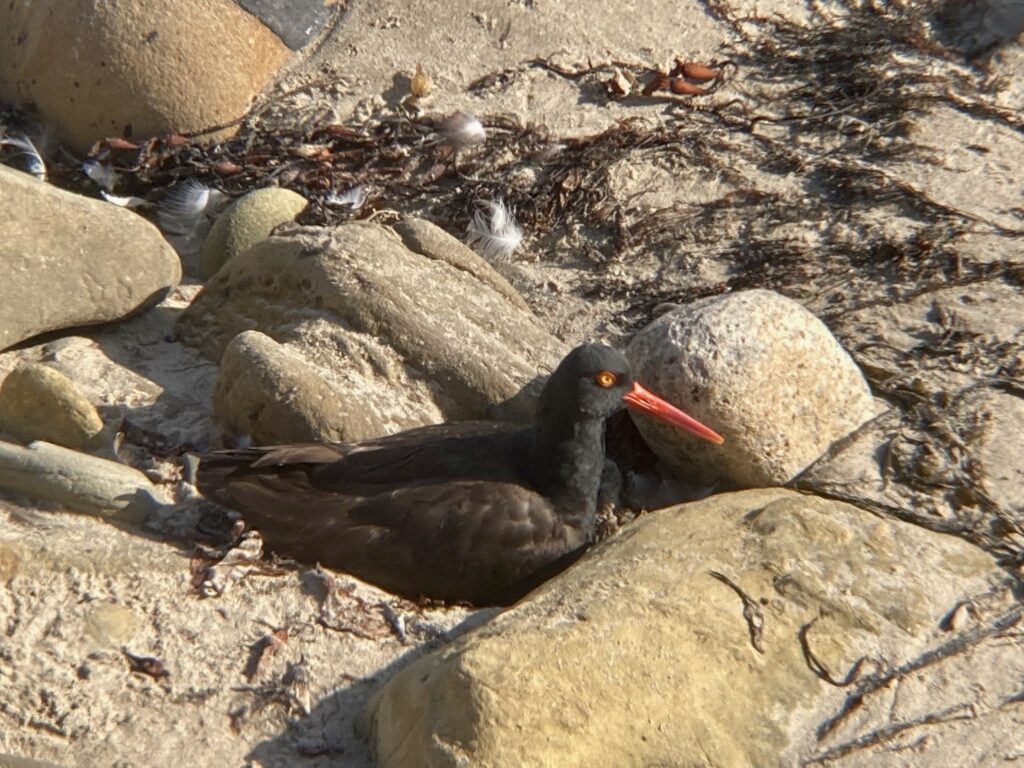
Dave and Julie first noticed the birds nesting on May 10, 2021, and visited the overlook frequently in the days that followed to keep tabs on them. On four occasions when the birds were exchanging incubation duties Dave and Julie were able to see that the nest contained a single egg.
I was excited to get a look myself, so after work on Friday I headed to the seal overlook. There was a strong wind blowing. When I arrived I was unable to spot the oystercatchers or their nest, but I hung around, and after an hour I finally heard oystercatcher calls, then saw first one bird, then another, walk out onto the beach from an area near the base of the cliff. I followed the birds in my binoculars, hoping one would go to the nest and start incubating, but neither one did. Instead they both milled around the area directly under the seal observation site, occasionally calling, leaving rows of tracks in the freshly blown sand.
Here are a few photos I got:
I was emailing with Dave during this time, hoping to get more specifics on the location of the nest; he told me that he and Julie planned to check the site later that day. After I got home I received the following message:
Hi John,
No wonder you were confused with trying to find the BLOY nest today. It failed most likely last night or this morning due to the strong NW winds that buried the nest and egg.
Tonight Julie and I returned to the overlook at approximately 1900 -1920 to look for the nest and found the two adult BLOY mulling around the area of the nest and softly vocalizing to each other. One adult circled around on the fresh sand in the area of the nest, then both birds flew north out of view around the corner of the bluffs towards Jelly Bowl. We photographed the area of the buried nest and compared it to a photo Julie took last night (052021). The nest is 100% buried and the rock that the bird incubated east of it is just barely visible, but all other evidence of the nest are gone – under the fresh blown sand. I added some red arrows on the photos to show the nest area. The 052021 photo is of the incubating bird and the 052121 photo is of the sand buried nest. Sorry for the poor quality of the photos.
Here are those photos:
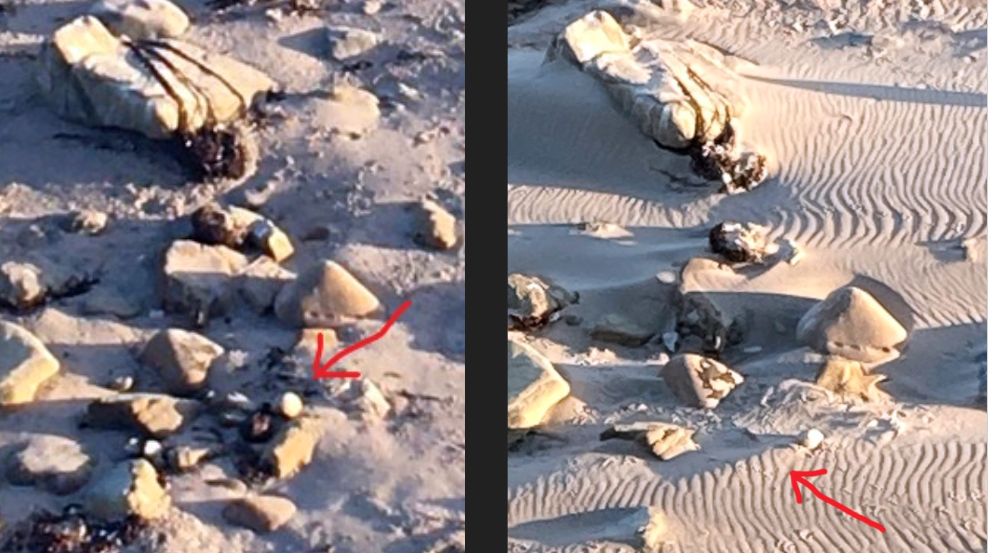
In the left photo, taken Thursday evening, you can just barely make out the dark back of an adult bird on the nest. In the right photo, taken shortly after I left on Friday, you can see that the nest site has been completely buried by windblown sand. If you look closely you can see the tracks of the adult birds crisscrossing the site.
It’s sad that this nesting attempt failed, but hopefully the oystercatchers will try again at some point. Dave wrote:
Depending on the year and weather conditions the success rate of BLOY hatching/fledging young is usually in the 35-50% range. I watched this pair form and setup this late winter and early spring, and fully expected them to leave the Carp rocky shoreline by April. During the early observation the pair was joined on the rocks by an AMOY X BLOY hybrid that has been visiting the area for a couple years now, but leaves during the breeding season like most BLOY seen in the area.
Oh well, maybe they will recycle (not likely this late) or will return next year and pick a new nest location that is not in such a dynamic area (on the bluff edge away from marauding ground squirrels or the local ravens/crows).
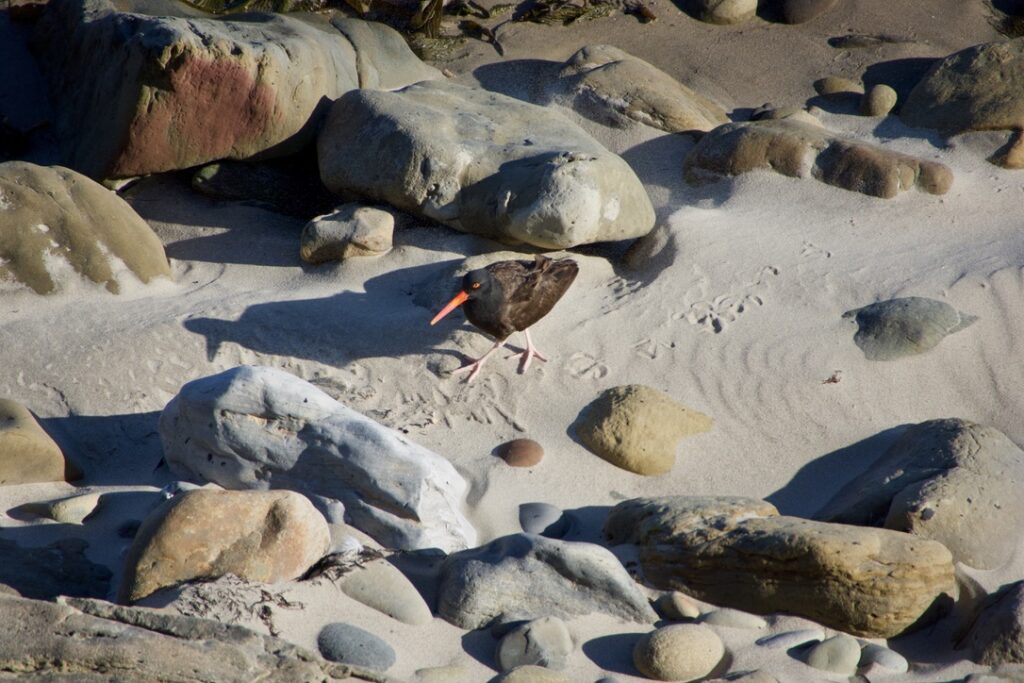
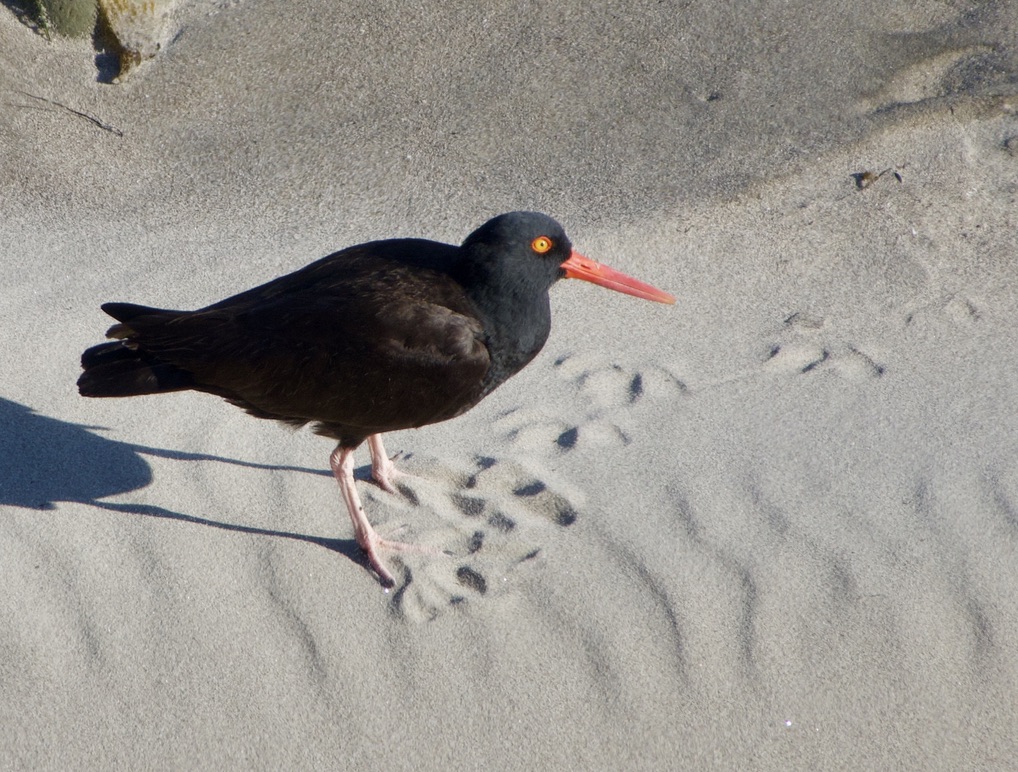
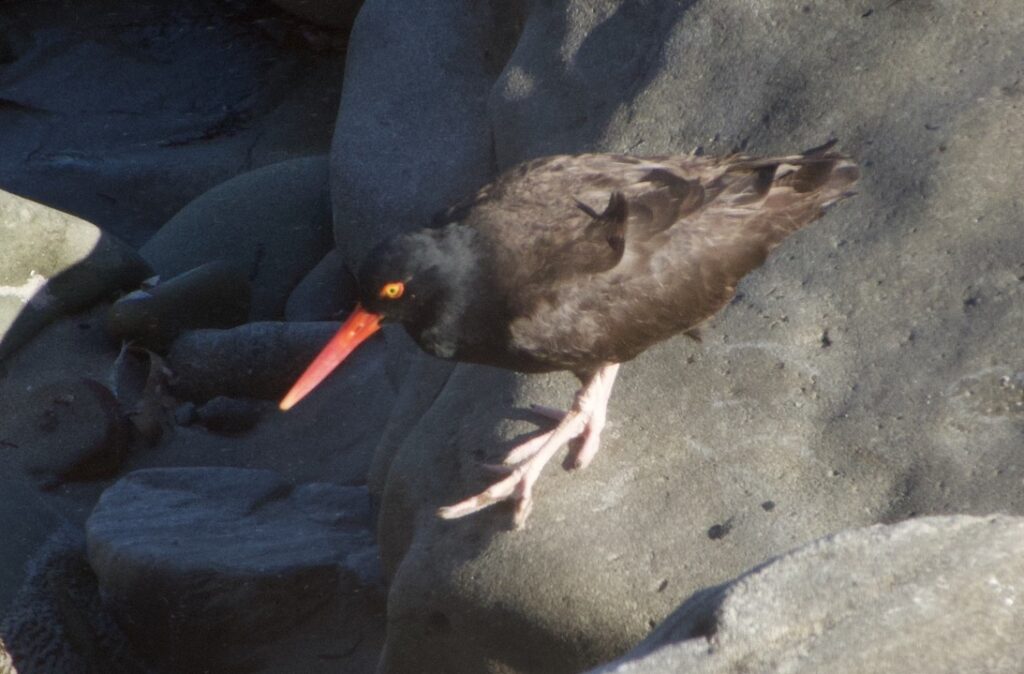
How neat…. I hope they have better success next time they try….. I have seen some odd places for BLOY nests on the Mendocino coast – some nests were successful, some were not. It’s fascinating to me, watching them. There’s a pair in Mendocino itself who consistently produce one white offspring nearly every year … it is thought that one of the parents is a descendant of a pair of white birds that showed up off Pt Cabrillo Light Station (Mendocino) about a decade or so ago. I sure hope this is a sign that they are expanding their breeding range. If people leave them alone, they might have a real chance.
Dave & Julie,
It’s good to hear that the Carpinteria Bluffs BLOY pair is attempting to nest. It is not too late for the pair to attempt a re-nest, especially in a different location. Although the majority of BLOYs with nest failures don’t attempt re-nests, a fair amount do. Re-nesting is common during late May through mid-July. Keep an eye on your pair They may attempt to re-nest.
Best,
Rick Hanks
Regional Coordinator
California Central Coast Black Oystercatcher Project